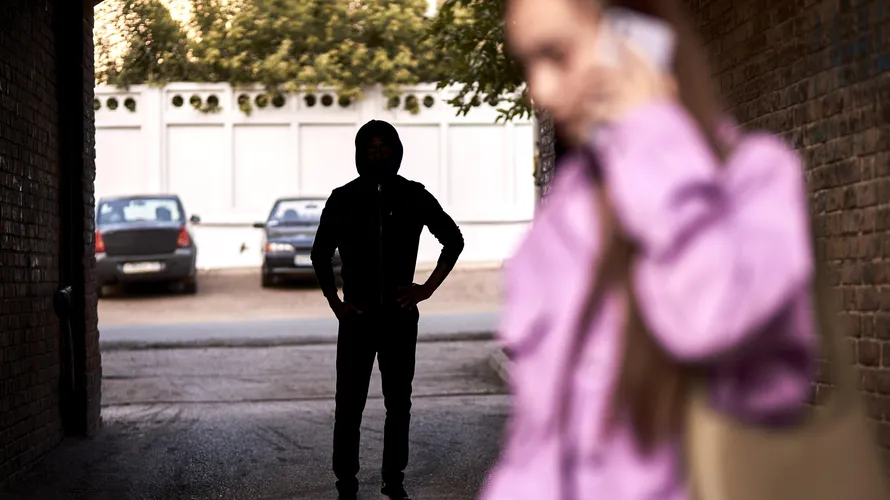August 26 | 2022

For better or worse, your mind is powerful.
It can be the mighty blade which helps you cut through the obstacles of life or it can be the debilitating handicap freezing you in place during a stressful event.
Over the years, many intelligent people have come up with methods and strategies to better understand and manipulate this tool we call the human mind.
From these, there are two major concepts that have risen to prominence within the world of self-defense and martial arts.
Want a quick way to build your awareness? Want to stay a step ahead of your assailant? This article is here to give you the mental keys to exactly that.
A Colorful Language
White, yellow, orange, and red. These aren’t just the colors of Bob Ross’ Sunset Aglow, these are the colors that will help you understand your mind and stay alive.
These are the colors with which late Marine Lt. Colonel Jeff Cooper cataloged peril and the readiness of a person’s mind. In one of the most useful ways for those dealing with life and death situations, he described the mental states as such:
● White = Unaware
● Yellow = Relaxed awareness
● Orange = Focused attention
● Red = Engaged and ready
In the White state, a person is oblivious. In an era of social media and non-stop entertainment on our wrists and in our palms, this is a common and deadly mental state to be in. A person wandering around downtown at night with AirPods lodged in their ears and painfully unaware of their surroundings is prime picking for a crime.Just as you are most susceptible to injury from the punch you don’t see coming, you are most susceptible to crime in the environment you pay the least attention to.
In Condition Yellow, you are at ease yet also present-minded and aware. You aren’t living in paranoia, you are simply attentive to your environment and the people around you. There may not be a certain threat yet, however you are better equipped in this state if one does arise. Consider this to be the mindset of a bodyguard or bouncer when not occupied with a current situation.
In Condition Orange, things get more interesting. You are alert to a more specific potential threat. A person is getting too close for comfort or a corner of the room seems to be getting too rowdy. At this point, you should be taking pre-emptive steps to set yourself up for safety. Perhaps you orient towards an exit or ensure you are in a posture which will help you stay balanced and protected.
In Condition Red, it’s go time! As the alarms are blaring in your head and the situation is unfolding, you are primed to do what needs done. In this phase, you are engaged with the threat and have to take action. You fight, you flee, you do what needs to be done in order to stay alive.
A fifth Color Code, Condition Black, is sometimes unofficially added in to further denote combat in progress or a freeze response (i.e. immobilized by panic or overwhelm). In this case, a distinction often gets made between the readiness to act of Condition Red and the decision to act of Condition Black.
Regardless of the number of conditions, these Cooper Color Codes are a helpful way to train your mentality for self defense and martial arts training. It isn’t about assessing the danger a situation may provide, it is a method that enables you to break yourself out of an oblivious or reluctant mentality.
Lifesaving action requires a proper mentality. If you are freaking out or frozen in a mental loop, your chances of survival seriously dwindle.
Heck, even Traditional Chinese Medicine says that the Yi (mind/intention) is an essential element in the process of manifesting Li (muscular force).
Throughout your day, you can ask yourself what Cooper Color Code you are in.
Try not to fall into Condition White. People in this phase aren’t just social zombies, they are the most likely to lose their money and lose their life.

Of Flying Footballs and Fists
Watch out!
If a football comes hurtling towards you, what are you apt to do?
OK, Tom Brady – you caught the ball (or at least tried to). Good job. But that’s not really all that happens in that type of situation.
According to the late United States Air Force Colonel John Boyd, whenever we are in the midst of an interaction or unfolding circumstances, we run through a four-phase cycle:
● Observe
● Orient
● Decide
● Act
First, we observe. We receive the stimulus that alerts us to change. In the example given early, you simply saw something hurtling towards you. Easy enough.
Second, we orient. From the stimus you received, you processed it in your brain and assessed what it was and what it meant to you. Was that object hurtling towards you a football or a thrown pie? Is this person getting ready to punch you or giving you a knuckle bump?
How you interpret the data presented to you is based on more than just your current environment however – culture, previous experience, and more can affect how you view your happenings.
Next up, we’ve gotta decide. Do I try to snatch this football slicing through the wind out of the air or do I sidestep and avoid it? This can be a tricky piece of the puzzle for martial artists – if we care too much about just collecting techniques and tactics, we are apt to stay frozen trying to pick the perfect one for the situation.
At some level, any decision is better than no decision. In a life or death situation, the last thing we want to do is be frozen like Han Solo in carbonite.
Fourth, is action. We finalized our decision and now we commit it to action. At this point, we are actually moving to grab the ball or avoid that punch. Mind you, this is a cycle. Our action causes a ripple effect. We have changed our position and likely incited a reaction out of our opponent, meaning we are right back at the beginning of observing what changed, orienting to the new situation, deciding a next step, and making it happen.
This OODA loop is a lil’ waltz that continues between you and your attacker until the situation is resolved in whatever way. Action and reaction, assess and commit.
How Does That Really Even Help Though?
The OODA concept pairs very, very well with the Cooper Color Codes mentioned earlier.
You can think of the OODA Loop as being the noteworthy times on an analog clock. Observe starts us off at 12:00, Orient is found at 3:00, Decide is 6:00, and Act is 9:00.
A person scouting for a victim has already made it pretty far into his day. By the time he is making his move on you, he is already at roughly 9:00 while an oblivious person’s day is still just getting started.
In other words, if you don’t see him until the last minute, you have some serious catching up to do.
Action beats reaction.
However, if you stay out of Condition White and instead see the threat and begin to focus and prepare for him, you have fast-forwarded your clock to be matched much closer to his instead.
Awareness begets better action.
At the end of the day, your mind can be your most powerful ally or debilitating opponent. Rather than let it wander and keep you inattentive while a problem is preparing, keep it broadly ready and prepared for action.
Stay alert.

